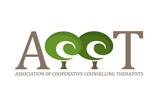
The nutritional needs of the human body vary across different life stages. In order to maintain a balanced diet, it is important to understand that different ages and conditions demand different levels of sustenance. While a varied and nutrient-dense diet is recommended for everyone, there are professional recommendations for Dietary Reference Intakes that are specific to various lifecycle stages (Institute of Medicine, 2005).
Nutritional needs are greatest during the body’s growth periods: infancy, adolescence, and pregnancy (Purdue, 2002). For nutritionists, it is crucial to understand the dietary requirements and potential deficiencies common to different life stages, in order to provide relevant advice to their clients.
Dietary Requirements for Infants and Children
Infants and children require higher intakes of macronutrients and micronutrients than any other developmental group (PCRM 2021). Macronutrients include things like carbohydrates, protein, and fat, while micronutrients are the vitamins and minerals that your body needs in smaller amounts. Research has shown that rapid cell division occurs during periods of growth, and requires protein, energy, and nutrients to sustain the process (PCRM, 2021). Breastmilk tends to provide a baby with the necessary amounts of nutrients and energy with additional immunological benefits (BetterHealth, 2012). The American Academy of Pediatrics recommends that an infant is exclusively breastfed until at least six months of age (PCRM, 2021).

Once a child is eating solid foods, it is important to introduce a varied diet. As their energy levels increase, their protein, vitamin, and mineral intake should also increase (BetterHealth, 2012). Health professionals suggest that children should accumulate enough nutrients to prepare for growth spurts that are common in adolescence (BetterHealth 2012). Those in nutritionist school should be aware of potential deficiencies that can occur at this lifecycle stage. For example, iron-deficiency anemia is a particular concern for teenage girls, who lose iron periodically during menstruation (Britannica, 2020). Establishing a healthy diet in the early stages will encourage good nutritional practices later on in life and reduce the risk of obesity or related diseases (Britannica, 2020).
Nutrition During Adolescence and Adulthood
As those in a nutritionist program may know, the body experiences changes in size and shape as part of normal adolescent development. In general, females tend to gain more body fat during adolescence, while males tend to gain more muscle and bone mass (Purdue, 2002). Nevertheless, it is important to uphold good nutritional habits during this stage. The Institute of Medicine recommends an increased intake of protein and energy for growth during adolescence (Institute of Medicine, 2005)
As young people enter adulthood, recommended dietary habits include limiting alcohol consumption, avoiding smoking, and exercising regularly. (Britannica, 2020) This can reduce the chance of health difficulties and increase vitality in later life (Britannica, 2020). In more mature adulthood, some seniors may have greater difficulty obtaining adequate nutrition due to age-related illnesses (PCRM, 2021). In that case, nutritional guidance for more mature adults should continue to emphasize a balanced and healthy diet, with the help of micronutrient supplements to counteract any deficiencies and support immune function (PCRM, 2021).

A Look at Pregnancy for Those in Nutritionist School
Factors other than age can also determine the nutritional requirements of the body. Pregnancy is a critical period that sees changes in both the mother and fetus. As such, pregnant women have an increased need for both macronutrients and micronutrients. In general, they require a higher intake of nutrients such as calcium, magnesium, iron, zinc, and potassium. (Institute of Medicine, 2005). Without sufficient nutrients obtained in prenatal development, children are at risk of developing certain chronic diseases later in life (PCRM).
While most nutrient requirements can be met with a careful diet, an iron supplement of 30 milligrams per day and a folic acid supplement are usually recommended throughout pregnancy (Britannica, 2020). Being mindful of nutritional requirements during pregnancy is essential to ensuring the health of both mother and child.
Why It’s Important for Those in Nutritionist School to Know About Lifecycle Nutrition
Graduates of nutritionist school learn to offer comprehensive coaching to clients of all ages in an effort to guide public understanding of how the consumption of food impacts our well-being. As you prepare to offer advice to these clients, it will be helpful to have an understanding of lifecycle nutrition to be able to make appropriate dietary recommendations. Every person is different, and knowing how to tailor nutritional advice to individuals is the first step in securing a rewarding career.
Are you interested in earning your nutritionist diploma?
Contact Rhodes Wellness College to learn more about our Professional Integrative Nutrition Diploma Program!
Works Cited
BetterHealth Channel (2012). Food and your life stages. Retrieved from
Britannica (2020). Human Nutrition. Retrieved from
Institute of Medicine (2005). Dietary Reference Intakes for Energy, Carbohydrate, Fiber, Fat, Fatty Acids, Cholesterol, Protein, and Amino Acids. Retrieved from https://doi.org/10.17226/10490
PCRM (2021). Nutritional Requirements Throughout the Life Cycle. Retrieved from
Purdue University (2002). Nutrition through the Lifecycle. Retrieved from








